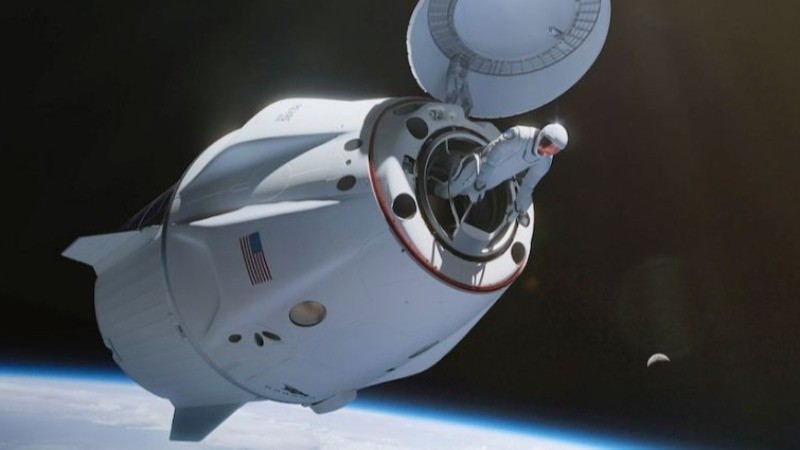
In a groundbreaking mission, billionaire Jared Isaacman and SpaceX crew trainer Sarah Gillis are set to make history with the first commercial spacewalk on Thursday morning. As part of the Polaris Dawn mission, they will exit their spacecraft, marking a significant step in non-governmental space exploration.
Isaacman and Gillis will take turns floating just outside the Crew Dragon capsule while their teammates, Anna Menon and Scott Poteet, ensure their safety from within the spacecraft. The spacewalk will begin after depressurizing the Crew Dragon at around 2:23 a.m. EDT. The crew will utilize a scaffold-like device, known as the "Skywalker" assembly, to maintain stability outside the spacecraft.
While Isaacman and Gillis will float outside the capsule, they will remain tethered to the spacecraft. Their SpaceX-designed suits rely on umbilicals, 12-foot cables that provide air, power, and communication, as they lack independent oxygen supplies.
The primary objective of this mission is to test the mobility and comfort of the newly developed spacesuits. The crew will perform various movements to determine the effort needed for basic tasks in space.
Cameras inside and outside the capsule, as well as on the astronauts' suits, will capture stunning visuals of Earth as the spacecraft orbits at altitudes ranging from 121 to 458 miles. The mission aims to contribute to the development of cost-effective spacesuits for future civilian missions to the Moon or Mars aboard SpaceX's Super Heavy-Starship rockets.
Isaacman emphasized the importance of this mission, saying, "We are working towards creating affordable EVA suits that can eventually be mass-produced for future space explorers, especially those journeying to Mars."
The Polaris Dawn crew launched from Kennedy Space Center on Tuesday aboard a SpaceX Falcon 9 rocket, reaching an altitude of 870 miles, the highest of any manned spacecraft since the Apollo missions. Following the launch, the crew began preparations for the spacewalk by gradually adjusting the cabin's oxygen levels and pressure to minimize the risk of decompression sickness.
The Crew Dragon capsule lacks an airlock, requiring special modifications to support the spacewalk. These include increased oxygen supply, enhanced environmental sensors, and a nitrogen repress system to restore cabin pressure after the spacewalk. The Skywalker scaffold and a motorized hatch system were also added for smooth operations.
Spacewalks have been a part of space exploration since NASA astronaut Ed White's iconic 1965 spacewalk, but this marks the first for a non-government crew. Unlike White, Isaacman and Gillis will remain tethered to the spacecraft, prioritizing the testing of the spacesuits' functionality over free-floating.
The advanced spacesuits feature innovative technologies, including a heads-up display in the helmet, joint mobility improvements, thermal insulation, and redundant oxygen systems. The heads-up display will provide the astronauts with critical data on suit pressure, temperature, and oxygen levels during the spacewalk.
This mission is the first of three planned by Isaacman in collaboration with SpaceX CEO Elon Musk. Future missions include another Crew Dragon flight and the first piloted mission of SpaceX's Super Heavy-Starship rocket.
While the cost of the mission remains undisclosed, the five-day Polaris Dawn mission will conclude with a splashdown in the Atlantic Ocean near Florida.
SpaceX Polaris Dawn Mission: Everything You Need to Know About the Historic Billionaire Spacewalk
Elon Musk’s SpaceX 'Polaris Dawn' Mission, Featuring First Commercial Spacewalk, Delayed Again
SpaceX Polaris Dawn Mission What To Know About SpaceX Launch and its Crew